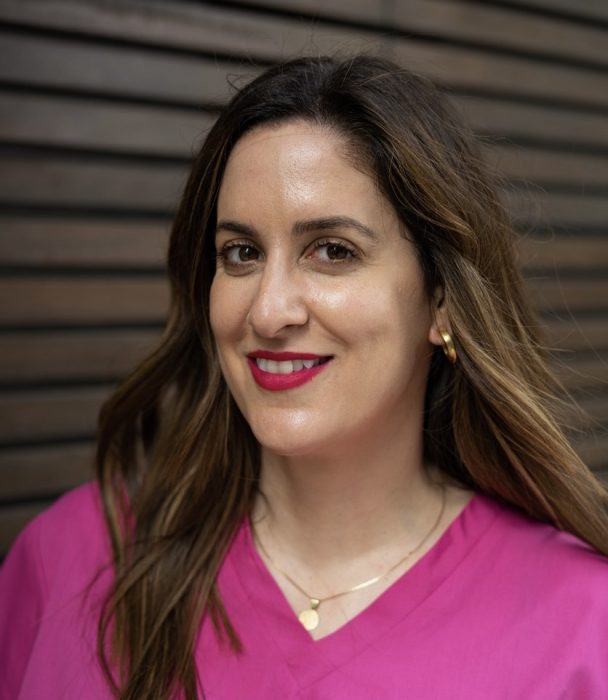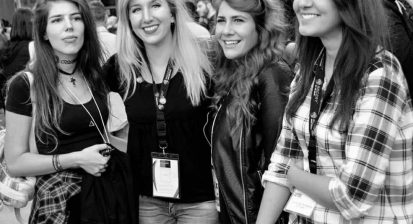INTERVIEWS
If only your skin could talk!
11.07.2022
by Angeliki Chanteli
SHARE
You know that your skin is your largest organ, right? But do you know how to take good care of it? I know I didn’t!
During the pandemic and the non-stop lockdowns, I decided that I want to know more about skin related topics. This is how I came across Dr Cristina Psomadakis and her Instagram account dr.somaskin. I started following her account, excited to have found an actual dermatologist talking about skincare. dr.somaskin not only reviews skin care products but also raises awareness about skin diseases. My favourite posts are the series of skincare careers where professionals from different skincare related areas talk briefly about their careers and backgrounds. Apart from creating content for her social media accounts, dr Psomadakis is a dermatologist specialising in Micrographically oriented histographic surgery, i.e., Mohs surgery treating skin cancer. She is also a member of the British Society for Medical Dermatology and responsible for their Communications & Digital Content. So, tag along and let’s find out more about Dr Cristina Psomadakis and her diverse STEM journey.
You have a BA in Anthropology from Chicago, and a MSc in Linguistics from Oxford How did you decide to change fields, from the Humanities to STEM, and study Medicine? Have you had a mentor assisting you with the choices you made?
My initial interest in studying humans was through a cultural-linguistic lens. However, after gaining my masters from Oxford I realised that my academic journey did not translate to an employment that suited me. I did not want to work in an office, and I discovered I didn’t want to go down the teaching / professorial route either. So, I worked in a variety of fields for a year and volunteered in a medical non-profit organisation in Cambodia. While I was there, I recognised how valuable my language and cultural skills were, but also saw the practical impact I could have as a doctor. England has accelerated four-year graduate medical courses and many accept students from a variety of academic backgrounds. It was quite a challenge to pivot into a STEM field. I had to essentially start from zero and felt lagging behind during my first year of medical school!
Can you tell us more about your expertise? What are you currently working on?
I am currently a dermatologist, based in London, and working on a fellowship in Mohs surgery and reconstruction, a specific surgical technique for skin cancers. I am also doing another masters on skin ageing at the university of Manchester, though at a part time basis. I just moved to Brighton from London so I could be closer to the sea. I grew up in Nafplio so I missed seeing the water every day.
How would you describe your typical day at work? What sort of challenges are you addressing?
I usually have to be at work by 8am. I work in a busy London hospital, in the biggest Mohs surgery unit in the country. I start by meeting the patients that are booked in for surgery, and going through the consent process with them. Then, we bring them into the operating theatres and begin removing the skin cancers. When we confirm that they are completely removed, using a microscope technique, we reconstruct the facial skin to close up any defects. When my fellowship finishes at the end of the year, I will be able to return to doing general dermatology clinics alongside surgery; but during the fellowship, it is surgery all day every day.
The main challenge that dermatologists face, and in fact most departments in the NHS (National Health System, UK), is the huge number of patients waiting to get an appointment, the staff shortages, and the high-pressure, stressful work environment. Skin cancer is one of the most common cancers worldwide and takes up a huge amount of a dermatologist’s workload.
You have recently taken the Communications & Digital Content role for the British Society for Medical Dermatology. What are your responsibilities and how do those align with your background?
I initially joined the committee as a junior doctor and my role was to assist in the background with pretty much whatever was needed. I identified that they had an outdated website and did not have a social media presence. I offered to take on the role of communications & digital and redesigned the website, created and ran social media accounts and helped create digital content. As a group, we also plan four main national dermatology conferences and create a space to connect with colleagues and share information. When you start working somewhere new, I think it is a good idea to spend some time observing how it works and then consider how you can add value and contribute to its improvement.
Science communication via social media platforms has been trending for some time now. What motivated you to communicate dermatology-related content on your Instagram and Tik-Tok accounts?
I started in the middle of the first lockdown. I was redeployed from dermatology to the front line in COVID wards, and I missed engaging with dermatology. When I wasn’t at work, I was also locked in the house and wanted a creative and social outlet. So, I started creating content online to share my passion about skin health.
How has the experience of connecting with your audience been so far? What would you recommend to other STEM professionals that want to communicate their science on social media?
Many people tell me they feel too shy to create social media content or worry they won’t have anything to say. Obviously, it’s not something you have to do. But if you are interested to join, and passionate about a topic, just go for it! People can sense if you are talking about something you love. Even if you feel like your topic is very niche, you will find an audience. At the end of the day, the number of followers doesn’t matter, what matters is connecting with people and sharing your passion.
Connect with Christina on Instagram

RELATED ARTICLES

Breaking News!
What did Science give to humanity this month?

The female force behind Tenebra Studios
Meet the amazing ladies who founded and work at the biggest gaming company in Greece.

Archive
Find all our past articles chronologically organized in our archive.
CONTACT US
____________
greekwomeninstem@gmail.com
Do you have ideas, questions, comments or special requests?
Would you like to highlight your research project or nominate a researcher that you would like to learn more about?
Please write to our email or fill out the form and hit “send”. We will be happy to talk with you!
[contact-form-7 id=”44″ title=”Contact form 1″]

